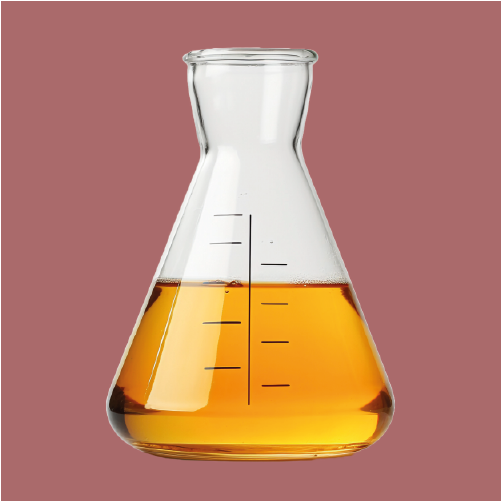Viscosity Index Improvers UAE - Improve Lubricant Performance
In the heart of the United Arab Emirates, where ambition is matched only by the scale of its infrastructure, the machinery that builds and powers the nation faces a relentless adversary: the climate. The combination of extreme heat, temperature volatility, abrasive dust, and intense UV radiation creates a perfect storm of conditions that relentlessly attack the lifeblood of all mechanical systems—the lubricant. For maintenance managers, plant operators, and fleet owners, the battle against wear, downtime, and soaring operational costs is constant. The frontline defense in this battle is not just the lubricant itself, but a critical, sophisticated component within it: the Viscosity Index Improver (VII).
This article moves beyond a basic explanation to provide a comprehensive technical and commercial analysis of VIIs. We will explore their molecular mechanics, their direct impact on your bottom line, how to select them wisely, and why their role is absolutely pivotal for success in the UAE’s demanding industrial landscape.
The Core Problem: Viscosity's Temperature Betrayal
To appreciate the solution, one must first understand the problem in depth. Viscosity is the measure of a fluid’s internal resistance to flow. In tribology (the science of friction, wear, and lubrication), it is the single most critical property of an oil, as it directly determines the thickness and strength of the lubricating film separating moving parts.
The inherent flaw of base oils—whether mineral, synthetic, or semi-synthetic—is that their viscosity is exquisitely sensitive to temperature. This relationship is not linear but logarithmic, making the problem exponentially worse in extreme environments.
High-Temperature Failure: As temperature soars, molecular activity increases, and intermolecular forces weaken, causing the oil to thin dramatically. In the UAE, where ambient temperatures reach 50°C and machinery operating temperatures can exceed 120°C, a conventional oil becomes watery. This leads to:
Catastrophic Wear: The hydrodynamic or elastohydrodynamic lubricating film collapses, resulting in metal-to-metal contact, micro-welding, scuffing, and rapid component failure.
Increased Blow-by: In engines, thin oil leads to increased passage past piston rings into the combustion chamber, reducing efficiency and increasing consumption.
Oxidation and Sludging: High heat accelerates the chemical reaction of oil with oxygen. Thin, oxidized oil forms harmful deposits, sludge, and corrosive acids, clogging filters and oil galleries.
Low-Temperature Failure: While less common, the UAE does experience cooler winter mornings and night operations where temperatures can drop significantly. Here, the oil thickens into a near-solid state, causing:
Starved Lubrication: The pump struggles to pull viscous oil from the sump, leading to critical delay in oil reaching bearings, camshafts, and turbochargers at startup—the period when over 80% of engine wear occurs.
Battery and Starter Strain: The engine requires immense torque to turn over against the resistance of thick oil, draining batteries and stressing starting systems.
Poor Fuel Economy: The engine uses a significant portion of its energy just to pump oil, reducing efficiency from the moment it starts.
This volatility is quantified by the Viscosity Index (VI), a scale established by ASTM D2270. A low VI (e.g., 90) indicates high sensitivity to temperature. A high VI (e.g., 160+) indicates superior stability. The goal is simple: achieve the highest possible VI without compromise.
PMA Viscosity Index Improver Specification
| Item | Index | Typical Value | Test Method |
| Appearance | Clear, transparent, no sediment | Clear, transparent, no sediment | Visual Inspection |
| Density (20℃), kg/m3 | 850-950 | 919 | GB/T13377, ASTM D4052 |
| Kinematic Viscosity (100℃), mm2/s | 1100-1850 | 1360 | GB/T265, ASTM D445 |
| Flash Point (COC), ℃ | ≥180 | 210 | GB/T3536, ASTM D92 |
| Color, number | <0.5 | <0.5 | GB/T6540, ASTM D1500 |
The Molecular Marvel: How Viscosity Index Improvers Work
Viscosity Index Improvers are not magic; they are a triumph of polymer chemistry. They are macromolecules, long-chain polymers (like polyalkyl methacrylates (PMA), olefin copolymers (OCP), or hydrogenated styrene-isoprene copolymers) dissolved in a base oil.
Their operation is a brilliant physical ballet:
The Cold State: At low temperatures, the polymer chains are coiled tightly into a compact ball. Their presence in the oil has a minimal impact on its inherent low-temperature fluidity. The oil can flow easily, ensuring prompt lubrication at startup.
The Hot State: As temperature increases, the polymer chains absorb thermal energy and begin to uncoil and expand into a large, sprawling network. This expansion dramatically increases the fluid’s internal resistance to flow (its viscosity). This thickening effect directly counteracts the base oil’s natural tendency to thin out.
In essence, the VII acts as a “smart thickener.” It remains dormant when its thickening effect is unwanted (when cold) and activates precisely when its effect is critically needed (when hot). This allows a single multigrade oil (e.g., 5W-40, 10W-50) to perform like two different single-grade oils, providing optimal protection across the entire temperature spectrum.
A Critical Deep Dive: The Issue of Shear Stability
The greatest technical challenge for any VII is mechanical shear. In operation, lubricant is constantly forced through tiny gaps under extreme pressure (e.g., between gear teeth, through hydraulic pump vanes, in journal bearings). These forces are powerful enough to physically break the long polymer chains of the VII—a process known as permanent shear loss.
This is the Achilles’ heel of poor-quality VIIs. Once the polymer chains are severed, they lose their ability to uncoil and thicken the oil. The viscosity of the oil permanently drops to a level closer to that of the base oil, defeating the entire purpose of the additive.
Shear Stability is, therefore, the most important performance metric for a VII. It is measured by standardized tests like the Bosch Diesel Injector Shear Test or the KRL Taper Roller Bearing Shear Test (ASTM D6278), which report the percentage of viscosity loss. A lower percentage loss indicates a more robust, durable VII.
High-quality formulators, like the experts at Rumanza Lubricants, prioritize high-shear-stability VIIs. They understand that a lubricant’s VI reading on a datasheet is meaningless if the additive package cannot maintain that performance throughout the entire drain interval. Their formulations use advanced polymer chemistry—often PMA-based, which are renowned for excellent shear stability and deposit control—to ensure the oil protects from the first hour to the last.
The Tangible Benefits: Why VIIs are a Strategic Investment in the UAE
The application of advanced, shear-stable VIIs translates into direct operational and financial advantages:
Radically Reduced Wear: The most significant benefit. By maintaining a stable lubricating film at peak temperatures, VIIs prevent abrasive and adhesive wear, drastically extending the life of engines, transmissions, and hydraulic systems. This directly reduces capital expenditure on replacement parts and major overhauls.
Enhanced Operational Efficiency: A stable viscosity ensures optimal performance in hydraulic systems (preventing internal leakage and maintaining pressure), improved fuel economy in engines (reducing friction), and consistent power output. For a large fleet or a continuous operation plant, these efficiency gains compound into substantial cost savings.
Extended Drain Intervals: A lubricant that resists oxidation and thermal degradation thanks to stable viscosity can often remain in service longer. This reduces downtime for oil changes, lowers lubricant purchase volumes, and cuts waste oil disposal costs, enhancing sustainability.
Superior Cold-Start Protection: Even in a hot climate, the ability to protect during the critical startup phase is vital. VIIs ensure quick oil circulation, preventing the dry starts that cause immense wear.
Reduced Oil Consumption: By preventing thinning and blow-by, a high-VI oil stays in the crankcase longer, reducing top-up requirements and operational expenses.
Navigating the Choices: A Comparative Guide
Selecting the right VII-enhanced lubricant requires careful consideration. The market offers various polymer types, each with pros and cons. The following table provides a comparative overview:
| Feature | Polyalkyl Methacrylate (PMA) | Olefin Copolymer (OCP) | Styrene Isoprene / Styrene Butadiene |
|---|---|---|---|
| Primary Use | Engine Oils, Hydraulic Fluids, Gear Oils | Most common in Engine Oils | Primarily Gear Oils |
| Shear Stability | Excellent (Low Permanent Shear Loss) | Good to Fair (Higher Shear Loss) | Poor (Highest Shear Loss) |
| Low-Temp Performance | Exceptional (Excellent Pour Point Depression) | Good | Fair to Poor |
| Thermal/Oxidative Stability | Excellent (Resists sludge/varnish) | Good (Can form deposits) | Fair |
| Cost Profile | Higher | Most Cost-Effective | Lower |
| Best For | Premium applications, extended drains, severe conditions (UAE climate) | Standard passenger car motor oils, cost-sensitive applications | Limited applications where cost is paramount and shear is low |
Analysis for the UAE Market: For the extreme conditions of the UAE, the superior shear stability and deposit control of PMA-based VIIs often make them the optimal choice for critical industrial and heavy-duty applications. While OCPs are common and cost-effective, they may not provide the same longevity and protection under constant, severe stress. A discerning user should always inquire about the shear stability index (SSI) of the finished lubricant.
The Rumanza Lubricants Advantage: A Case Study in Expertise
In a market flooded with options, choosing a partner is as important as choosing a technology. Rumanza Lubricants exemplifies the application of this deep technical knowledge. Their approach goes beyond simply blending additives into base oil.
Their lubricant formulations are engineered with a clear understanding of the local environment. By leveraging high-stability PMA-based Viscosity Index Improvers and pairing them with premium base oils and robust antioxidant packages, they create products that are inherently designed to win against the UAE climate. The focus of Rumanza Lubricants on shear stability ensures that the performance promised on the product datasheet is the performance delivered inside your equipment thousands of kilometers later. This commitment to quality and performance over mere specification checking is what defines a true lubrication partner.
Conclusion: An Investment in Uninterrupted Performance
In the demanding industrial and economic landscape of the UAE, machinery is not just a tool; it is the engine of progress. Protecting this engine requires a sophisticated, proactive approach to lubrication. Viscosity Index Improvers are not merely an additive; they are the cornerstone of modern lubricant technology, transforming a simple fluid into a dynamic, protective shield.
Understanding their function, the critical importance of shear stability, and the differences between polymer types empowers businesses to make informed decisions. By partnering with knowledgeable blenders who prioritize advanced chemistry, such as Rumanza Lubricants, operations can secure a formidable competitive advantage: unparalleled equipment reliability, reduced total cost of ownership, and the confidence that their machinery is protected against the elements, ensuring uninterrupted productivity and powering the nation’s future.
FAQs
A Viscosity Index Improver (VII) is a specialized polymer additive engineered to reduce an oil’s tendency to thin out at high temperatures and thicken too much at low temperatures. It makes the lubricant’s viscosity more stable across a wide range of operating conditions, which is absolutely critical for machinery operating in the extreme climate of the UAE.
The UAE’s environment presents a unique challenge with ambient temperatures often exceeding 45°C and machinery operating temperatures going even higher. This intense heat causes ordinary oils to thin out, leading to increased wear and potential failure. VIIs ensure the oil maintains its protective thickness, while also ensuring good flow on cooler mornings for easy starting.
No, they are not. VIIs are made from different types of polymers (e.g., PMA, OCP), each with varying performance characteristics. The key differentiator is shear stability—a premium VII from a quality supplier like Rumanza Lubricants is designed to resist breaking down under mechanical stress, providing lasting protection throughout the oil’s service life. Lower-quality VIIs can shear permanently, leading to a loss of viscosity and protection.
A high-quality VII improves fuel efficiency in two ways. First, it ensures the oil isn’t too thick at startup, reducing the energy needed to pump it. Second, and more importantly, it prevents the oil from becoming too thin at operating temperature, which improves internal sealing (reducing blow-by) and maintains optimal hydrodynamic lubrication, both of which reduce engine load and fuel consumption.
Yes, indirectly. By maintaining stable viscosity, the VII helps reduce the rate of oil oxidation and thermal degradation at high temperatures. This, combined with a high-quality base oil and other additives, can allow for extended drain intervals while still providing adequate protection. However, any extension should always be based on oil analysis (OA) to confirm the oil’s condition.
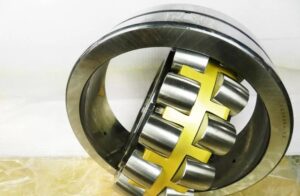
Guide to Choosing the Right Lithium Complex Grease in UAE
Guide to Choosing the Right Lithium Complex Grease in UAE for Unbeatable Performance Discover More In the heart of a region defined by its ambition and extreme climate, the machinery that builds and powers the UAE operates under immense pressure. From the towering cranes sculpting Dubai’s skyline to the massive haul trucks in Abu Dhabi’s industrial zones and the relentless conveyor systems in Jebel Ali Port, every moving part is a critical link in the chain of progress. Protecting these

Lithium Grease UAE – Buy Multi-Purpose Lubricant Grease
Lithium Grease UAE – Buy Multi-Purpose Lubricant Grease Discover More In the relentless engine of the United Arab Emirates’ economy—where monumental construction, non-stop logistics, and a climate of extreme heat and abrasive sand are the norm—the battle against friction and corrosion is perpetual. The integrity of a construction crane’s slewing ring, the smooth operation of a delivery fleet’s wheel bearings, and the silent efficiency of a hotel’s HVAC system all hinge on a single, critical decision: the choice of lubricant.

Best CNG Engine Oil in UAE for Cars – Protect Your CNG Engine
Best CNG Engine Oil in UAE for Cars – Protect Your CNG Engine Discover More The automotive landscape in the UAE is undergoing a quiet revolution. As fuel prices fluctuate and environmental consciousness grows, more and more drivers are making the intelligent switch to Compressed Natural Gas (CNG). CNG-powered cars offer significant cost savings on fuel and produce fewer emissions, making them an economically and ecologically sound choice. However, this transition comes with a critical responsibility: understanding that a CNG
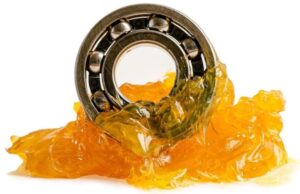
Calcium Sulphonate Grease UAE | High-Temperature Grease
Calcium Sulphonate Grease UAE | High-Temperature Grease Discover More Introduction: The Unforgiving Demands of UAE Industry The United Arab Emirates stands as a global titan of industry and infrastructure. From the sprawling metallurgical plants in Mussafah and the massive port operations of Jebel Ali to the relentless pace of construction shaping Dubai’s skyline and the vast logistics hubs of Al Ain, the machinery that powers this nation operates under extreme duress. Soaring ambient temperatures that regularly exceed 45°C, pervasive dust

What is Rubber Process Oil? | Guide to Applications, Benefits, and Selection
What is Rubber Process Oil? | Guide to Applications, Benefits, and Selection Discover More In the sophisticated ecosystem of rubber manufacturing, raw polymers are the canvas, but rubber process oil is the essential medium that brings the masterpiece to life. It is the critical component that transforms rigid, unworkable raw materials into the versatile, durable, and high-performance rubber products that define modern industry and daily convenience. For specialists dedicated to chemical innovation and precision, such as the team at Rumanza Lubricants, the science

Which UAE Lubricants manufacturers is Best for High-Mileage Engines?
Which UAE Lubricants manufacturers is Best for High-Mileage Engines? Discover More The sprawling deserts and bustling metropolises of the United Arab Emirates present a uniquely demanding environment for vehicles, pushing engine lubrication technology to its absolute limits. From the scorching summer heat that can cause conventional oils to thin out and lose protective properties, to the endless stop-start traffic of cities like Dubai and Abu Dhabi that promotes sludge and acidic buildup, our cars endure a severe service regimen unlike
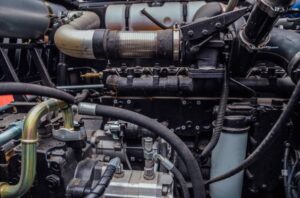
What Vehicles Use Kerasene? A Comprehensive Guide
What Vehicles Use Kerasene? A Comprehensive Guide to Fueling Beyond Gasoline Discover More When we think of vehicle fuel, gasoline and diesel immediately come to mind. They are the lifeblood of our daily commutes, the power behind the trucks that deliver our goods, and the standard by which we measure automotive progress. But venture beyond the everyday, into the realms of high-altitude aviation, rugged agricultural machinery, and groundbreaking space exploration, and you’ll discover a different, equally vital fuel that operates

How To Chose Antioxidant Additives in UAE | Industrial Grade Chemicals?
How To Chose Antioxidant Additives in UAE | Industrial Grade Chemicals? Discover More In the heart of a rapidly industrializing region, the United Arab Emirates stands as a beacon of manufacturing, logistics, and heavy industry. From the sprawling automotive workshops of Dubai to the massive petrochemical complexes in Ruwais, the performance and longevity of machinery are paramount. At the core of this operational excellence lies a critical, yet often overlooked, component: industrial lubricants and fluids. These lifeblood substances are constantly
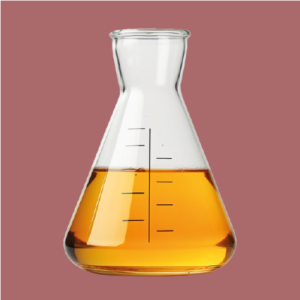
Viscosity Index Improvers UAE – Improve Lubricant Performance
Viscosity Index Improvers UAE – Improve Lubricant Performance Discover More In the heart of the United Arab Emirates, where ambition is matched only by the scale of its infrastructure, the machinery that builds and powers the nation faces a relentless adversary: the climate. The combination of extreme heat, temperature volatility, abrasive dust, and intense UV radiation creates a perfect storm of conditions that relentlessly attack the lifeblood of all mechanical systems—the lubricant. For maintenance managers, plant operators, and fleet owners,
